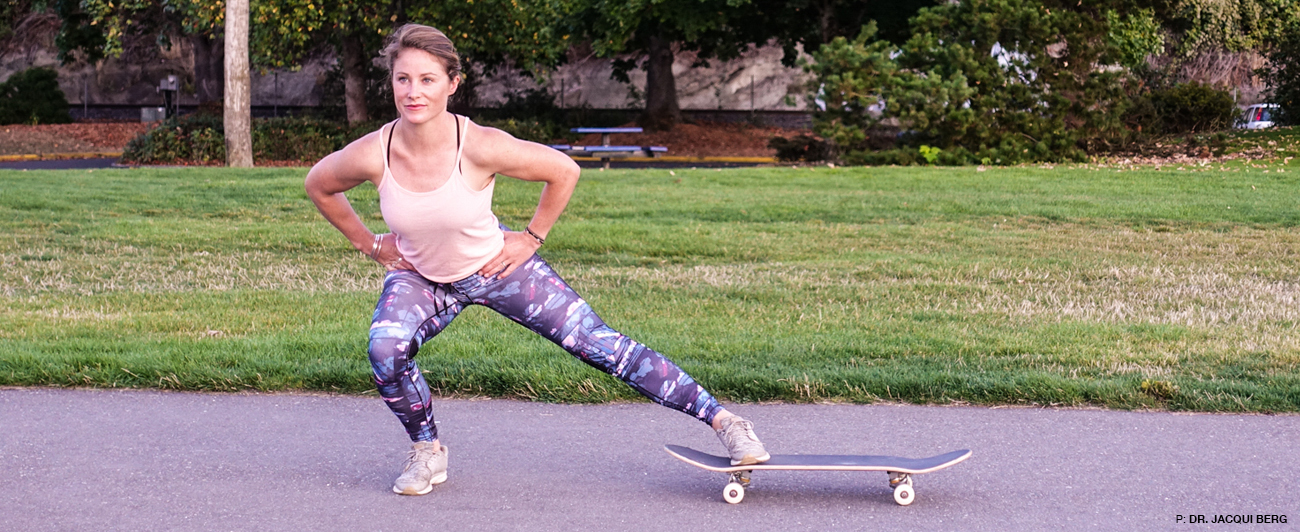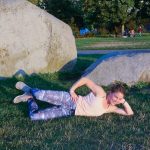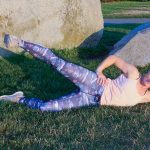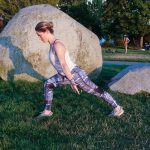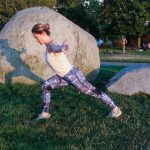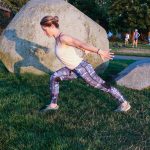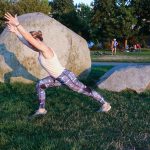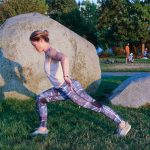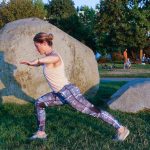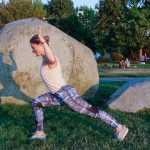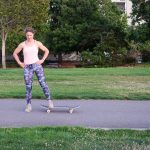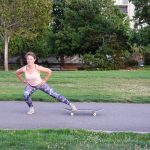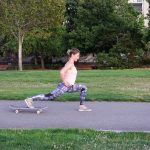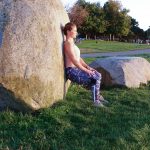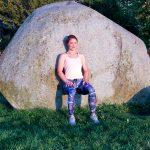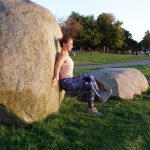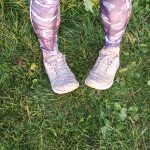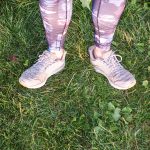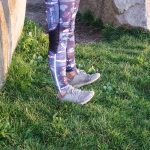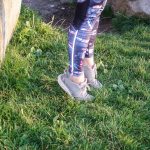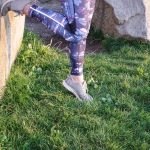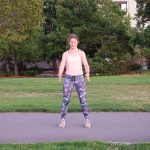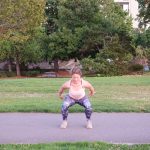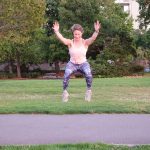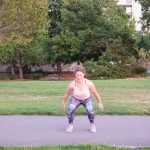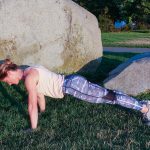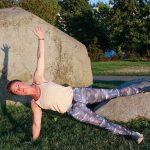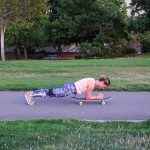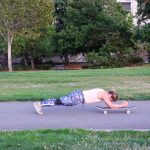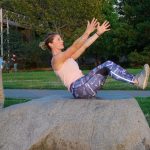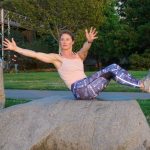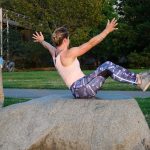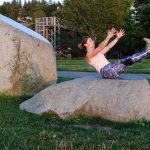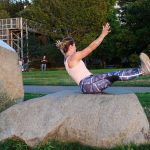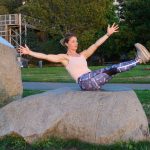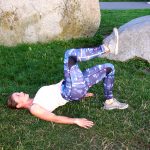Column
Dr. Jacqui, DPT
Physio Fit for Preseason Performance
Dr. Jacqui, DPT is a new monthly column where former pro snowboarder and Doctor of Physical Therapy Jacqui Berg offers advice for snowboard-specific training and dealing with injuries. For her first entry she’s provided some key preseason training tips and techniques to help you get ready for this winter.
Fall is here and it’s time to get back in riding shape after all that summer fun. Preseason training is the best way to ensure you have your best season yet, and avoid potential injuries that could leave you sitting out pow days in the lodge with a swollen ankle or hurt shoulder.
Whether you’re trying a new trick or rag-dolling down a steep pitch, snowboarding requires strength, power, endurance, balance, and coordination in a variety of unique positions and movements that aren’t as common in our daily lives. General strength and conditioning will improve your joint alignment and muscular control, helping your body absorb impacts, fall with control, and handle repetitive movements. In addition, focusing on snowboard specific training, such as jumping, twisting, and low squatting, will improve your performance and strengthen your muscles in positions that you might not typically train.
ABOVE Help control knee alignment by strengthening the vitally important hip abductors and hip external rotators. These muscles help prevent knee injuries and support back health.
Most snowboarding injuries occur from traumatic falls or impacts. They can happen when your muscles aren’t strong enough to support your joint alignment when you take a hard impact or twisting force across a joint. This often occurs when you are fatigued after an amazing line or long day in the park. Be prepared for those inevitable falls by strengthening your legs, hips, and core, and very importantly, your upper extremities. Leg strength and endurance are paramount for performance, but the most common snowboard injuries occur to the wrists and shoulders, including fractures and dislocations. Since your feet are fixed to your snowboard, arms often take the blunt force of a fall, so strengthen your scapular stabilizers and rotator cuff muscles to prevent shoulder dislocations, and keep your arms close to you and make a fist when you fall. Elbows and forearms tolerate more force in a fall than an outstretched arm, which leaves your wrists and shoulders vulnerable.
ABOVE Strengthen your rotator cuff and scapular muscle to decrease the risk of shoulder dislocation and other injuries.These are an introduction to shoulder movements, which you can perform in a lunge position to increase the work load against gravity. You can increase the difficulty with resistance bands, positioning, and dumbbells.
Of course, knee injuries are also common in snowboarding. Avoid reaching with your legs extended for an over or under shot landing, which puts you at higher risk for an injury. Keep those knees bent and absorb the impact with strong legs. Strengthening your hip abductor muscles (gluteus medius) and hip external rotators will help maintain ideal knee joint alignment, and decrease the risk for MCL, ACL, and meniscus injuries, that can occur when your knees collapse inwards with a high force.
ABOVE These skateboard exercises train your legs eccentrically, loading your leg muscles and making them work as the muscle lengthens. These exercises will help you avoid pulling a muscle while skating with just your front leg strapped in, and make you faster getting to the front of the line on a pow day. The wall sits build endurance.
Besides traumatic injuries, preseason training also helps avid snowboarders avoid overuse injuries from high frequency, constant load, which can result in conditions such as tendinitis. Ankle strength and stability, endurance training in a squat position, and adding balance exercises to your routine will help your body prepare for long, epic days of riding. One way to train balance is to try standing on one leg while closing your eyes to engage other body systems that help with balance.
ABOVE It takes a lot of ankle strength and endurance to maneuver your board and hold those long traverses. Incorporate ankle inversion, eversion, dorsiflexion, and plantar flexion to help decrease the risk of ankle injuries and reduce the soreness and fatigue on those first days out on the mountain.
Make sure your gear still fits well and that you have addressed old injuries to cut down on any subtle compensations that could lead to new or further injury. Brain health is precious, so wear a helmet to protect your skull and decrease the risk of brain injuries from any unexpected head collisions with other mountain goers, park features, trees, or the ground.
Altitude training is another aspect to include in any preseason program. Depending on the elevation of your home mountain and where you live, incorporating altitude training into your routine will help you acclimatize to higher elevations and avoid feeling sick or short of breath during those first few days back on the mountain. Get up to your favorite resort for some hiking or mountain biking, bring a mat for power yoga, or do some body resisted strength training and plyometrics to build your altitude tolerance back up after those long days at sea level beaches.
To help get you started on your own preseason training, check out the above and below examples of my favorite preseason exercises, as performed by certified powder slayer Robin Van Gyn.
Dr. Jacqui Berg grew up riding Mt. Baker and The Summit at Snoqualmie in the 90s before going on to snowboard at a professional level, competing in Big Air and Slopestyle events and filming video parts with Misschief and Runway Films. Jacqui developed an intrigue with sports performance, rehabilitation and injury prevention, which led her to pursuing a Bachelor’s in kinesiology at Western Washington University and then a Doctorate of Physical Therapy from the University of Washington. After graduating with honors, she moved to Bellingham, WA where she practices physical therapy with a focus on sport specific therapy and injury prevention.
Disclaimer: The contents of “Jacqui Berg, DPT,” such as text, graphics, images, and other material, are not intended as a substitute for care from a physical therapist or health care professional. If you experience signs or symptoms of an injury or other medical condition, you should seek the advice of a qualified health provider with any questions or concerns. Use the advice here at your own discretion and risk.
